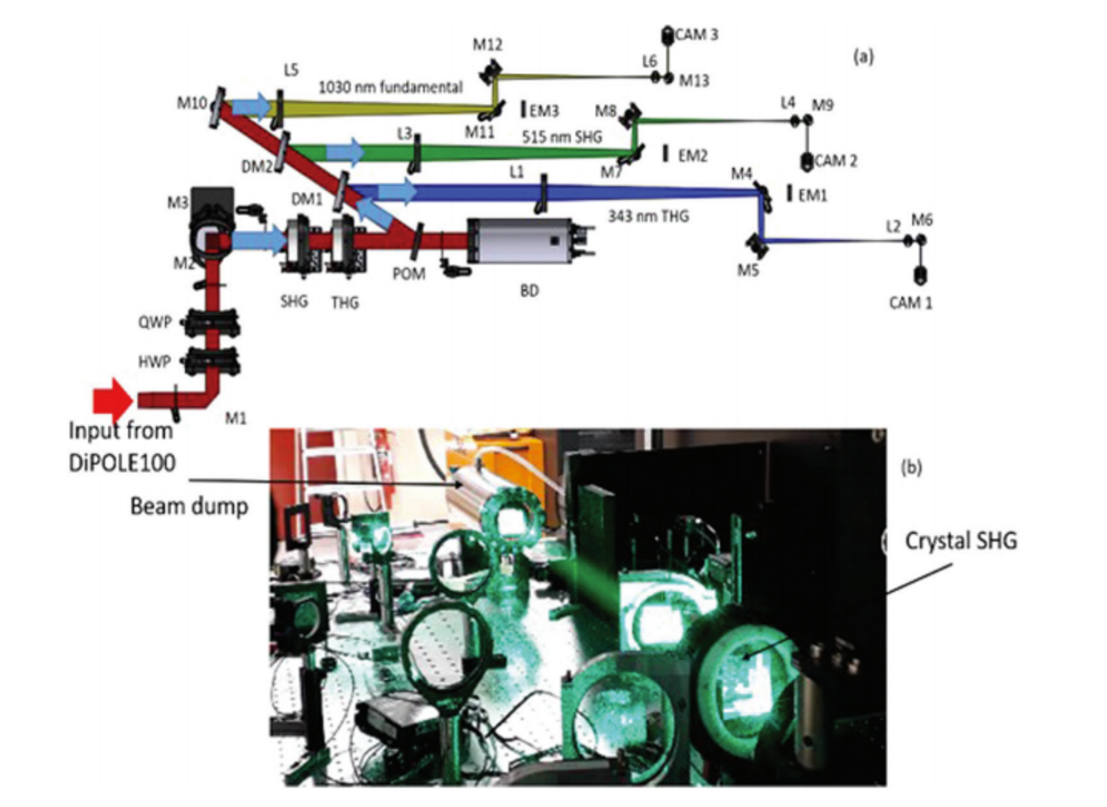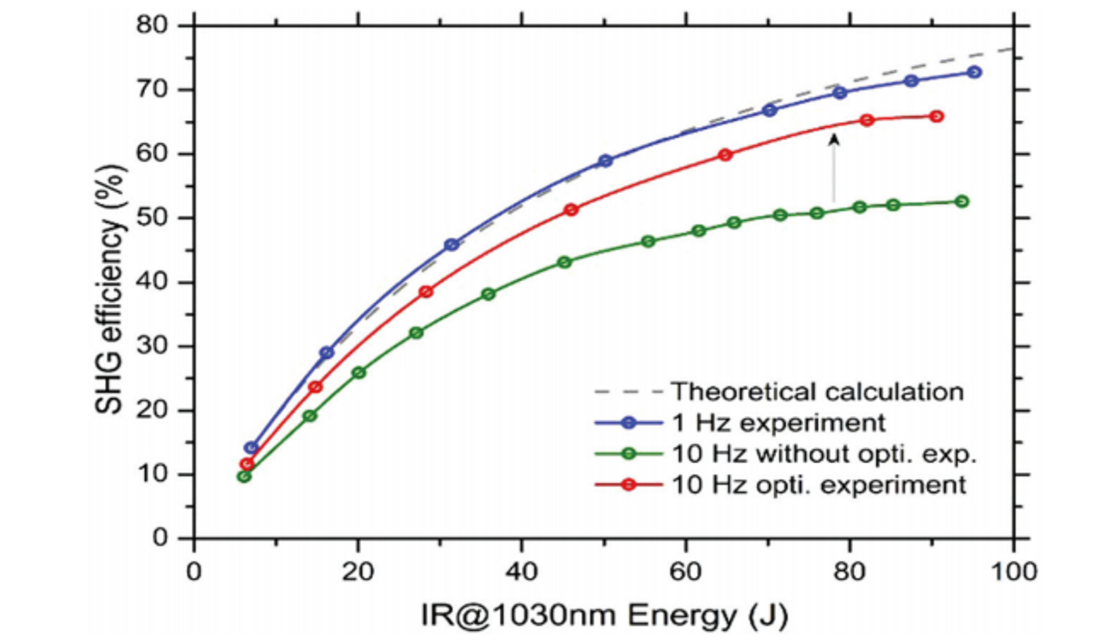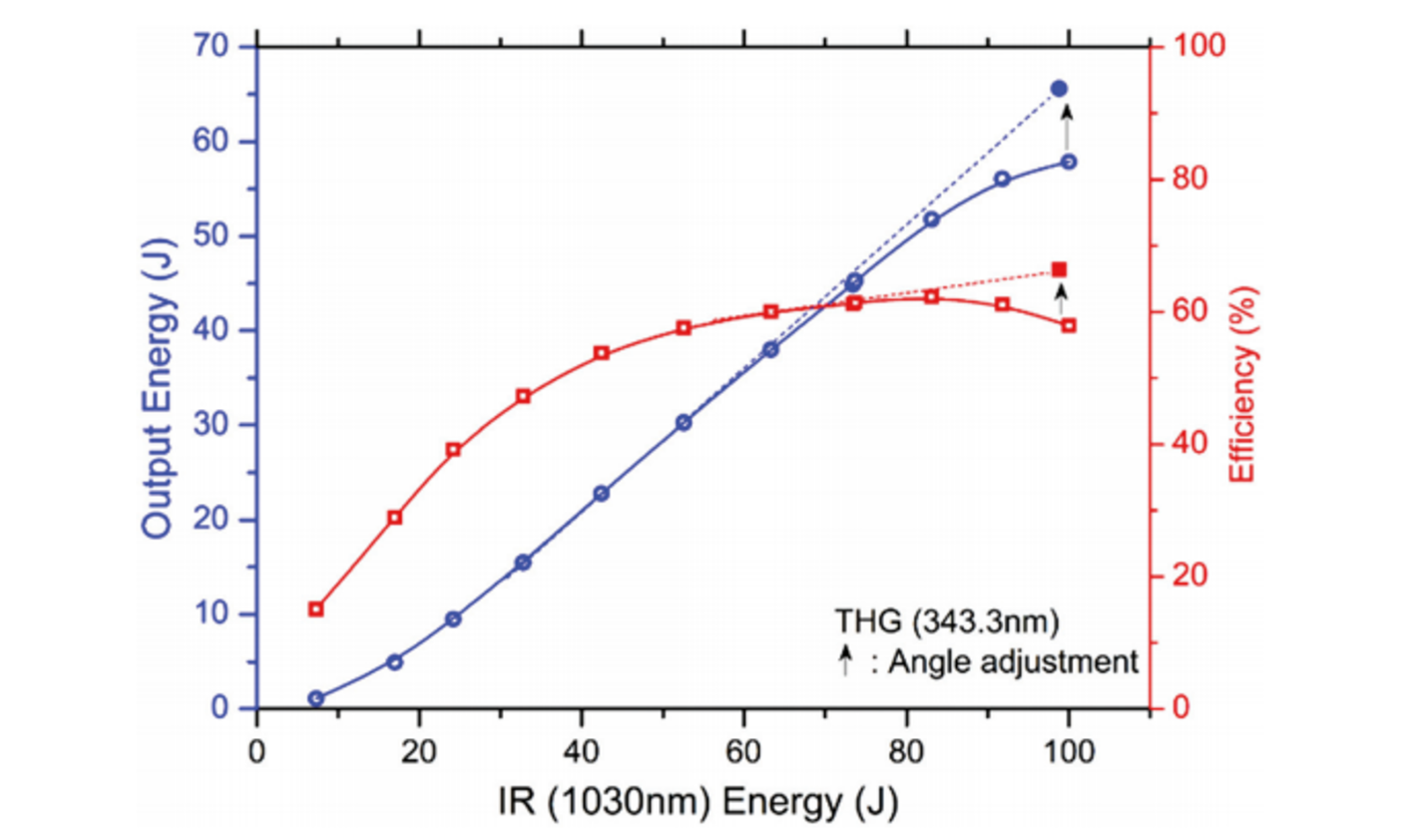The ability to convert the frequency of an infra-red laser system is important, this is achieved using non-linear crystals. Second harmonic generation (SHG) has been investigated thoroughly as this would produce green light, at approximately 515nm, which could be used as a pump for titanium sapphire systems such as Gemini, EPAC or optical parametric chirped pulse amplification (OPCPA) systems.
Our investigations into harmonic generation currently focus on SHG using the following crystals:
- Deuterated Dihydrogen Phosphate (DKDP)
- Yittrium Calcuim Oxoborate (YCOB)
- Lithium Triborate (LBO)
We have also investigated third harmonic generation (THG) with Lithium Triborate (LBO).
We have reported on the successful demonstration of second and third harmonic conversion of a high-energy, high average power 1030 nm diode pumped Yb-doped yttrium aluminum garnet (Yb:YAG) nanosecond pulsed laser in a large aperture lithium triborate (LBO) crystal. The experimental setup is shown in Figure 1.
![]()

Figure 1 - (a) Schematic of the experimental setup for the SHG and THG of DiPOLE100 and (b) photograph showing the SHG crystal and the beam dump during the experiment with reflections showing the incident and generated beams.
We demonstrated second harmonic generation of 60 J at 10 Hz (600 W) at 515 nm (Figure 2) and third harmonic generation of 65 J at 1 Hz (65W) at 343 nm (Figure 3), with efficiencies of 66% and 68%, respectively. These results, to the best of our knowledge, represent the highest energy and power reported for frequency conversion to green and UV-A wavelengths.
![]()

Figure 2 - Measured and predicted dependence of SHG conversion efficiency on infra-red input energy at pulse rates of 1 Hz and 10 Hz.

Figure 3 - Measured dependence of THG energy conversion and efficiency on infrared input energy at 1 Hz. The arrow shows the point at which adjustments of the THG and SHG crystal angle were made.
Further information can be found in the paper published in Optics letters Vol. 46, No. 8 / 15 April 2021.
